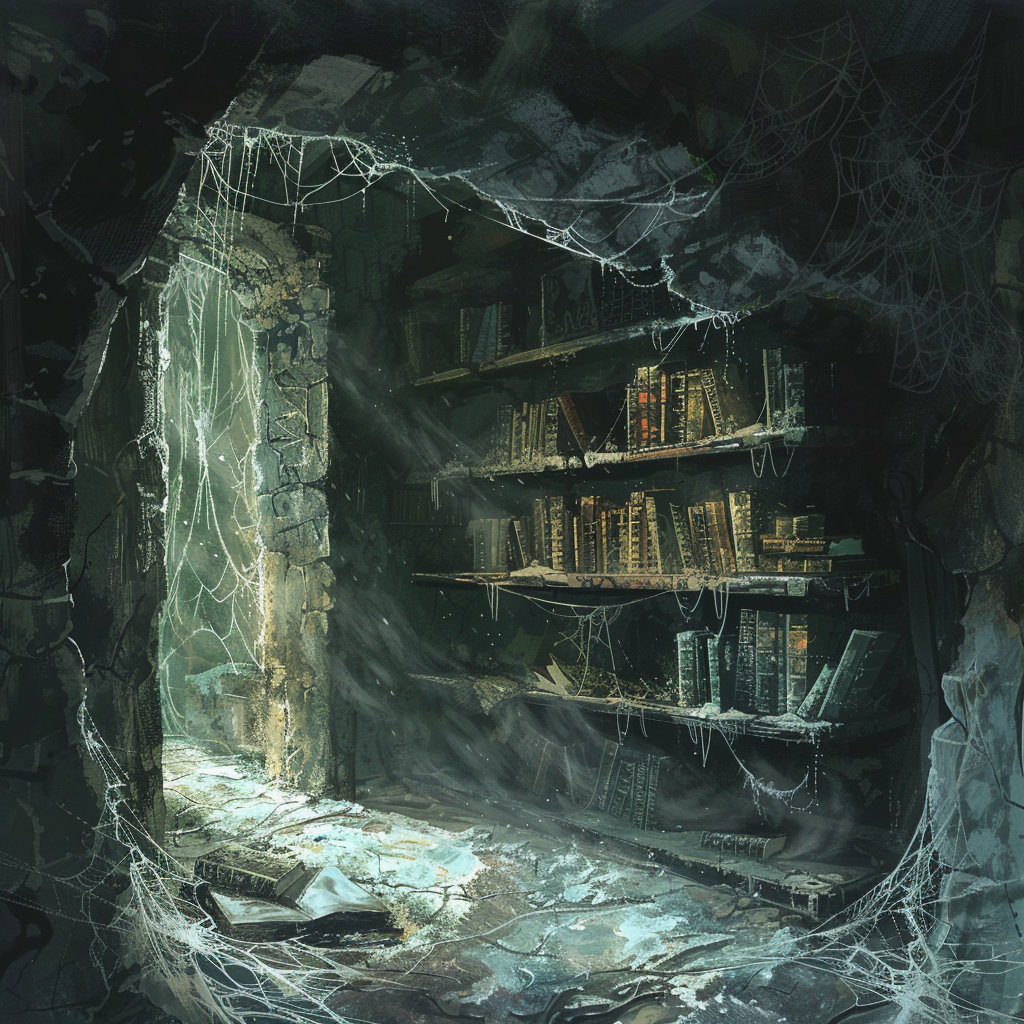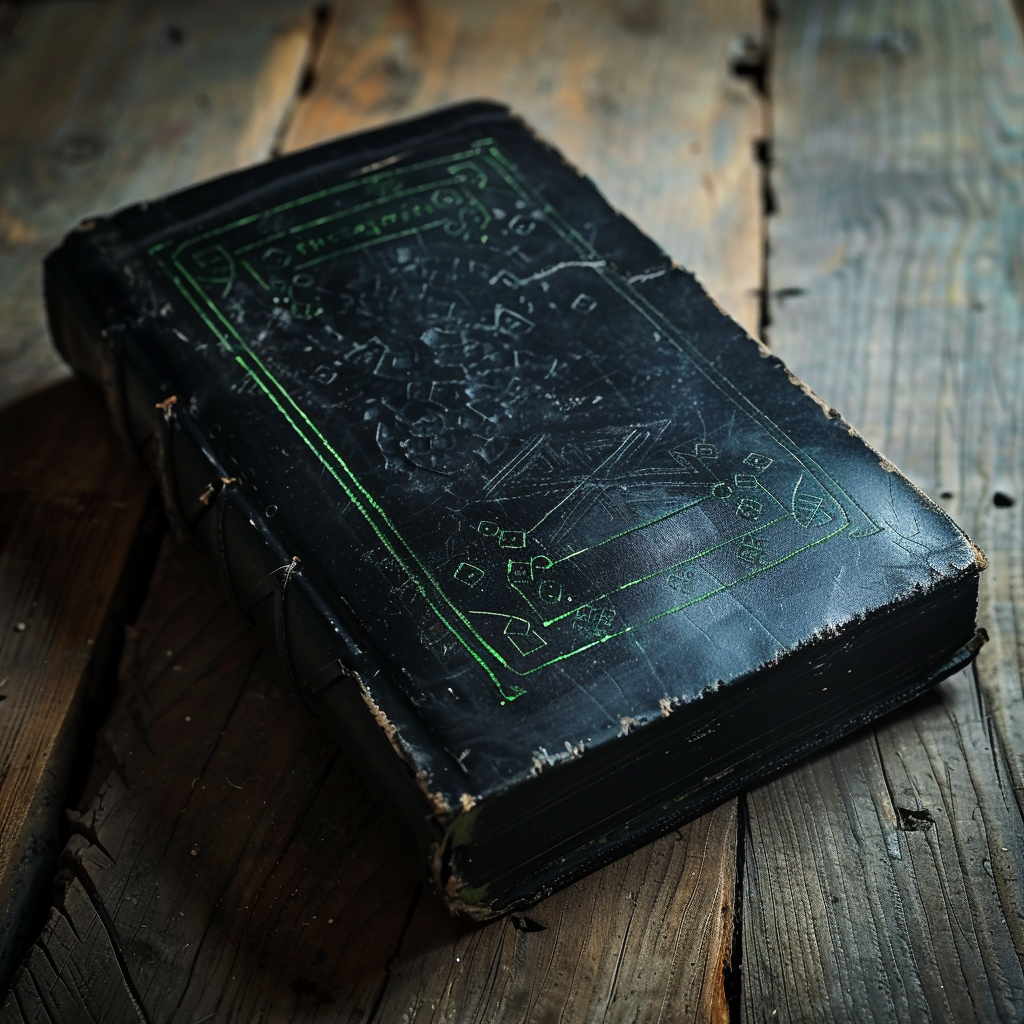Unveiling the Secrets of the Goblin Cave: What Lies Within the Bookshelf?
As a dungeon master with countless campaigns under my belt, I’ve often found that the simplest moments can turn into the most memorable experiences. One such moment is when players encounter something as ordinary as a bookshelf in an unexpected place, like a goblin cave. What could be more intriguing? Today, I’ll share my thoughts and experiences on how to transform this seemingly mundane encounter into a highlight of your campaign.
Setting the Scene: The Goblin Cave
Before we delve into the bookshelf itself, let’s set the scene. Imagine a dimly lit, damp cave, the air thick with the scent of earth and decay. The walls are lined with crude drawings and symbols, and the sound of distant goblin chatter echoes through the tunnels. This is no ordinary goblin lair; it’s a place filled with history and secrets waiting to be uncovered.
Building the Atmosphere in a Goblin Cave
Creating the right atmosphere is crucial. Use descriptive language to paint a vivid picture for your players. Mention the flickering torchlight casting eerie shadows, the uneven stone floor beneath their feet, and the occasional scurrying of unseen creatures. The more immersive the setting, the more impactful the discovery of the bookshelf will be.
The Bookshelf: An Unlikely Find
As the adventurers navigate the cave, they stumble upon a small chamber, partially hidden behind a tattered curtain. Inside, they find a bookshelf. In a goblin cave? The unexpected nature of this discovery immediately piques their curiosity.
Describing the Bookshelf in the Goblin Cave
Describe the bookshelf in detail. It’s old and worn, with cobwebs clinging to its corners. The wood is cracked and faded, yet the books it holds are surprisingly well-preserved. This contrast can suggest that someone, or something, values the knowledge contained within.
The Contents: A Treasure Trove of Lore
Now, let’s dive into what the players might find on this bookshelf. The contents can vary greatly depending on the direction you want your campaign to take, but here are some suggestions that have worked wonders in my sessions.
Ancient Tomes and Scrolls
Among the dusty tomes, players might find ancient texts written in languages long forgotten. These could contain spells, rituals, or historical accounts that provide valuable context for the campaign. Perhaps one book details the history of the goblin tribe, revealing why they chose this cave as their home.
Example: The Goblin King’s Diary
One of my favorite inclusions is the diary of a long-deceased goblin king. The diary offers a glimpse into the daily life of the goblins, their struggles, and their interactions with other creatures. This not only adds depth to the goblins as characters but also provides potential plot hooks for future adventures.
Excerpt from the Goblin King’s Diary:
12th day of the Harvest Moon: “Today, we sealed the pact with the Darkling Tribe. Our numbers grow, but so do our enemies. The humans have pushed deeper into our lands, and the spirits of the cave grow restless. If we are to survive, we must find the ancient relic spoken of in the old tales. The shamans say it lies beneath the stone where the river meets the mountain. Tomorrow, we send a scouting party. May the spirits guide them.”
Mysterious Maps and Schematics
In addition to books, the shelf might hold maps and schematics. These could lead to hidden treasure, secret passages within the cave, or even other locations connected to the goblins. Maps can be a great way to encourage exploration and add a layer of mystery.
Example: The Map to the Lost City
In one campaign, my players found a map leading to a lost city buried beneath the mountains. This discovery set them on a new quest, full of ancient traps and forgotten magic. The excitement of uncovering new locations kept the group engaged and eager for more.
Details of the Map:
The map is drawn on aged parchment, edges frayed and stained with what appears to be old blood. The intricate lines and symbols depict a vast underground network, leading to a location marked with an ominous skull symbol. Notations in a mix of goblin and an archaic dialect suggest traps, guardians, and “the gate of eternal sleep” as potential dangers.
Arcane Artifacts and Curiosities
Bookshelves in fantasy settings often hold more than just books. Consider adding small artifacts or curiosities that hint at greater mysteries. These could be magical items, alchemical ingredients, or relics from a bygone era.
Example: The Crystal Orb
One time, I placed a crystal orb on the bookshelf that allowed players to glimpse into the past when activated. This orb became a key tool in unraveling the cave’s history and understanding the motivations of its current inhabitants. The players cherished it, and it added a layer of depth to their investigation.
Description of the Crystal Orb:
The orb is about the size of an apple, its surface smooth and cool to the touch. When held, it begins to glow with a faint, ethereal light, showing swirling images of the past. Upon focusing, the players can see snippets of the goblins’ daily lives, ancient rituals, and the pivotal moments that shaped the tribe’s fate.
Excerpt from a Vision:
A vision shows a time long past, where a powerful mage stands before the goblin king, offering a pact sealed with blood. The mage’s words echo in the viewer’s mind: “With this power, you will rise above all others, but beware, for the cost will be your soul.”
Adding Personal Touches: Making It Unique
Every DM has their style, and personalizing the contents of the bookshelf can make the experience even more special for your players. Reflect on your campaign’s themes, your players’ interests, and the overarching narrative.
Tying It to Player Backstories
If possible, tie some of the bookshelf’s contents to your players’ backstories. Perhaps one of the books contains a prophecy related to a player’s character, or an artifact resonates with a family heirloom they possess. These connections make the discovery feel more personal and significant.
Example: The Family Grimoire
In one memorable session, a player found a grimoire on the bookshelf that had belonged to their ancestor. The grimoire contained spells and rituals unique to their family, providing both a power boost and a rich narrative thread to explore.
Excerpt from the Family Grimoire:
To my descendants, This grimoire holds the secrets of our lineage. Guard it well, for within these pages lies the power to shape destiny. The spell of the Everlight is our greatest gift, but it comes with a heavy burden. Use it wisely, and remember the words of our forebears: “In darkness, we find our light.”
Foreshadowing Future Events
Use the bookshelf to foreshadow future events or introduce new plot elements. Subtle hints and cryptic messages can build anticipation and keep players guessing about what lies ahead.
Example: The Prophetic Scroll
Include a scroll with a vague prophecy about a looming threat. As the campaign progresses, players will recall the prophecy and feel a sense of satisfaction as they piece together the clues. This technique creates a cohesive and engaging storyline.
Excerpt from the Prophetic Scroll: When the moon is shadowed and the earth trembles, the ancient evil shall awaken. From the depths, it will rise, and only those with hearts of valor shall stand against it. Seek the one who wields the light of the past, for they hold the key to our salvation.
Conclusion: The Power of Discovery
A bookshelf in a goblin cave might seem like a small detail, but with the right approach, it can become a pivotal moment in your campaign. By carefully curating the contents and tying them to the larger narrative, you can create an experience that your players will remember for years to come.
Final Thoughts
Remember, the key to a great D&D session is not just in the grand battles or epic quests, but in the moments of discovery and wonder. The bookshelf in the goblin cave is a perfect example of how a small, well-thought-out detail can enrich your world and captivate your players.
So, fellow dungeon masters, next time your players stumble upon a dusty bookshelf in an unlikely place, seize the opportunity to weave a tale of mystery and intrigue. Who knows what secrets they might uncover?

Need more information?
Unable to locate the answers you’re seeking?


